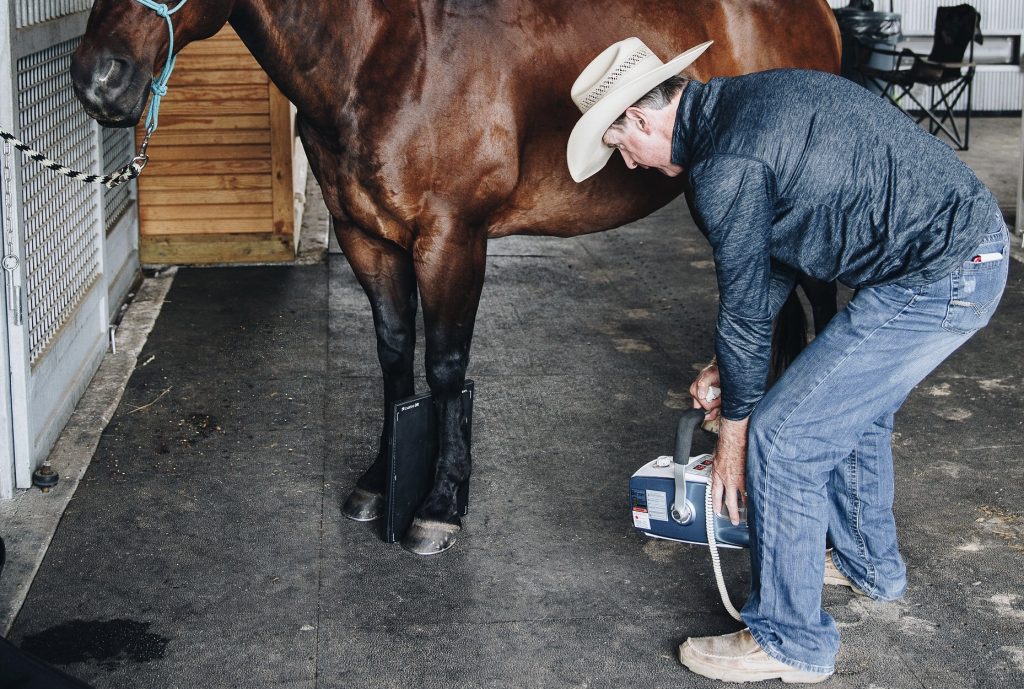As much as we love them, we have to admit that horses can be incredibly fragile animals. How many times have you come out to the barn hoping for a nice ride only to find that your horse has given themself another injury? I can say that I experienced this just last night. Sometimes, these injuries are more serious and require the attention of a vet. However, oftentimes we find ourselves dealing with smaller cuts and issues. Given the proper supplies, we can treat these issues effectively while saving ourselves the cost of yet another farm call. So, what should you include in your barn first aid kit? Below is a list of some of the most essential items to keep on hand in the barn aisle.
- Digital Thermometer: Excellent to have on hand if you are trying to monitor for infection or notice that your horse is acting off in general.
- Petroleum Jelly: Used to lubricate the thermometer to make the temp taking process more comfortable for your horse.
- Rubbing Alcohol: Used to disinfect the thermometer before and after use ONLY. Do not use it on wounds as alcohol is incredibly harsh to the healing skin cells.
- Gauze (Sterile and Non-Sterile): The perfect all use item in your first aid kit. If a cut is more serious it is always good to have a sterile option on hand. Just be sure to check the expiration dates on your sterile products.
- Triple Antibiotic Ointment: There are various equine and human brands available. Just be sure to check the regulations of your show governing bodies as some ingredients in popular ointment brands have recently been banned.
- Antiseptic Wound Wash: Iodine wash works great for this! Just be sure to keep an eye on expiration dates, and note the difference between a scrub and a concentrate as they are used differently
- Bandage Scissors: Cutting bandages off can be a stressful experience if you do not have the proper scissors. Ensuring you have safe, flat edged bandage scissors will help keep you and your horse safe in the bandage removal process.
- Bandage Tape: Good to have on hand if you need to wrap a limb. Ensure that your tape has good adhesive, as many brands are not very sticky when put the test at the barn.
- Vet Wrap: It is always a good idea to have several rolls on hand, whether you need to bandage a limb, pack a hoof, or anything in between!
- Hoof Pick: You can never have too many in the barn, and this can be a handy place to keep one!
Being prepared for any sort of medical emergency in the barn is the first step to keeping you and your horse as safe as possible. While this list is not comprehensive, it is a good base to start building your barn first aid kit off of. Another thing that I would suggest adding to your barn first aid kit is the LubriSyn HA Topical: Advanced Wound Gel with HA. This topical wound gel is antiseptic and antibacterial in formula. The Hyaluronic Acid aids in the removal of dirt and grime from wounds, as well as aiding in regeneration of the injured tissue. In fact, this formula is the most comprehensive wound gel on the market, making it the perfect addition to every first aid kit! Find the product and more info here:
LubriSynHA Topical : Advanced Wound Gel with Hyaluronic Acid

